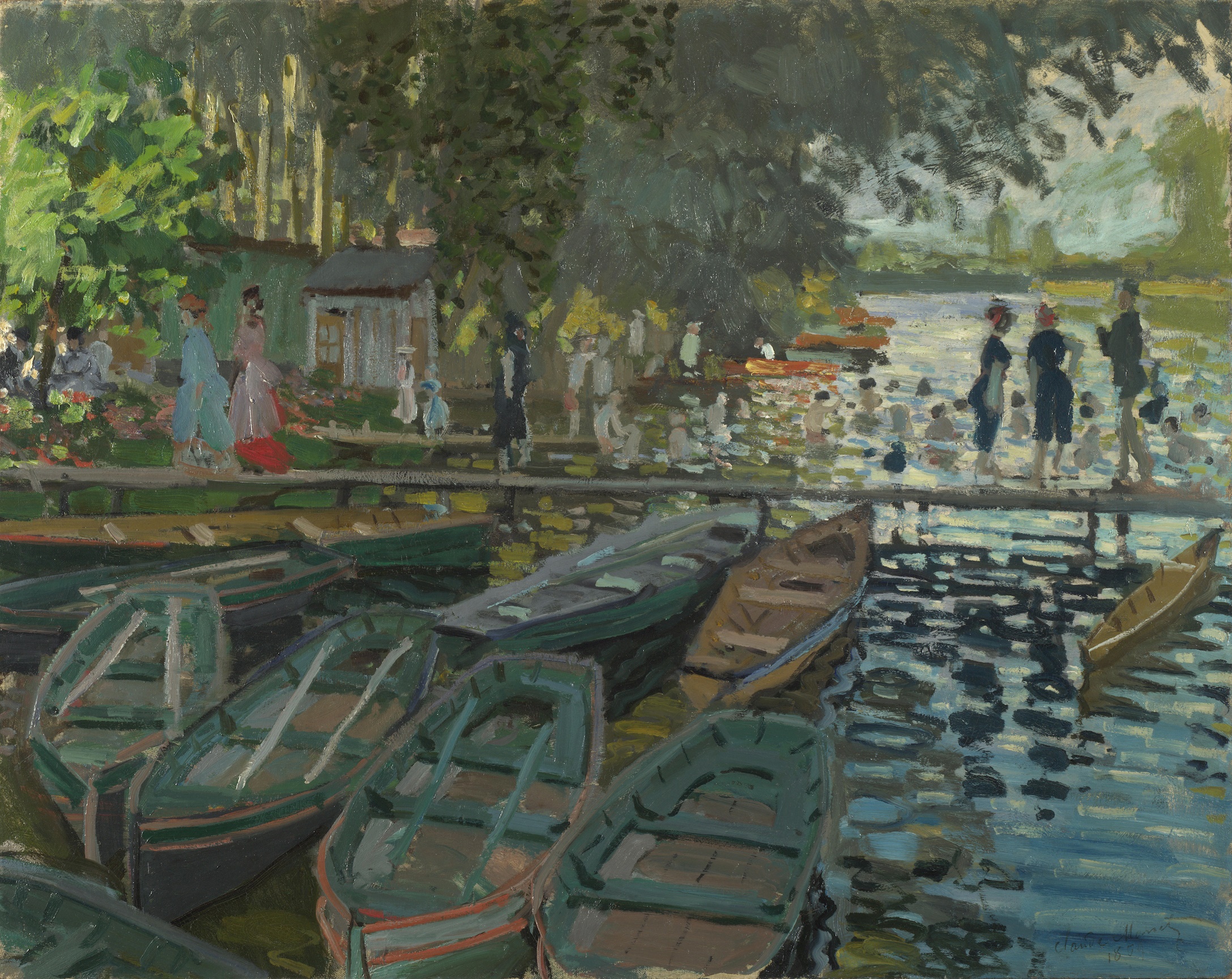This week, Ms Carr-Gomm discusses Claude Monet’s Bathers at La Grenouillère.
“Hurray! The National Gallery is to open on 8th July, from 11am – 4pm, by advance booking only. Lets hope that this painting from its collection is one for the summer as it shows city dwellers having fun in the country.
Claude Monet, Bathers at La Grenouillère, 1869, oil on canvas, 73 x 92 cm, National Gallery London
This small painting depicts a summers day at La Grenouillère, or The Frog Pool, a boating and bathing resort on the river Seine about 19 kilometres west of Paris. It had an artificial island, known as The Camembert or The Flower Pot, which was linked by bridge to a floating restaurant which you can see in another painting by Monet of the view just to the right of our picture, now in the Metropolitan Museum of Art. Click here to view.
In the foreground of the National Gallery version, boats are moored waiting to be hired and behind them some people stroll along the banks of the river while others take a dip, their heads bobbing about in the sunshine.
This painting marks the time when Monet had developed the style that came to be known as Impressionist: he uses broad strokes of paint, applied straight from the palette to the canvas, in order to describe the ripples of the water, and paint is thickly dabbed on to describe the foliage of the trees. His palette is much brighter than that of a traditional painter and he has an instinctive use of complementary colours, called so because they intensify one another: the red of the womans dress against the green grass and the orange on the blue water for example. He painted outside, known as painting en plein air’, in order to capture what he saw directly in front of him.
Painting outside was only made possible by technological advances: metal tubes that held paints without discolouring them were invented in 1841 – previously artists had to use pigs bladders and glass syringes to transport them. New brighter synthetic colours were invented; visible strokes of paint were the result of using thicker, flat, machine-made brushes rather than the older kind made of fine squirrel or sable hair; new portable easels and boxes that held artists equipment made it possible for Monet and his friend, Renoir, to set up easily and paint together side by side.
Pierre-Auguste Renoir, La Grenouillere, 1869, oil on canvas, National Museum, Stockholm
https://en.wikipedia.org/wiki/Bain_%C3%A0_la_Grenouill%C3%A8re#/media/File:Renoir11.jpg
Of course, one of the biggest inventions of the industrial revolution was the railway. This meant that, for the first time, all types of Parisians could leave the centre of the city and be in the countryside in less than an hour. Boating and bathing resorts sprang up along the Seine with cafes and restaurants to add to the pleasure. Now, the working classes could enjoy the countryside which had previously been the privilege only of landowners and those with a carriage.”














